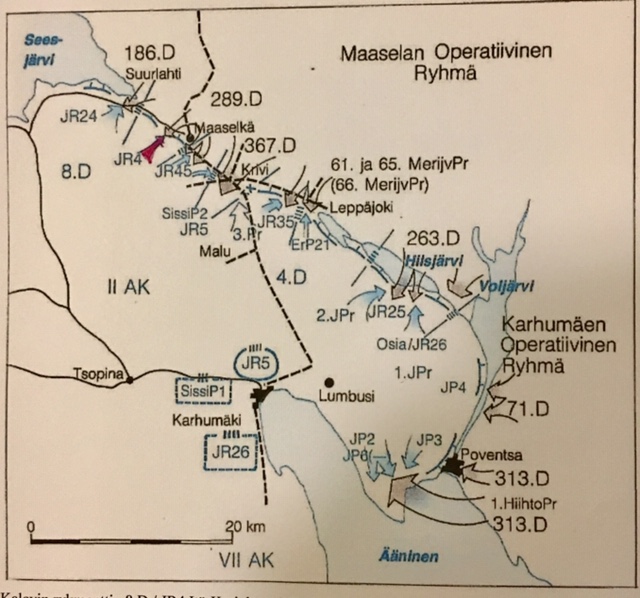Finland was involved in World War II on November 30, 1939, when the Soviet Union despite the non-aggression treaty attacked the land border (1300 km) without proclaiming war. The Soviet population at that time was 194 million and Finland 3.4 million. And to add to those figures USSR was able mobilize over 1,000,000 soldiers. In comparison the Finnish Defense Forces had 295,000 soldiers.
From that perspective the power ratios were 1:4 favouring Soviets. And it was even more overwhelming when we look at the numbers like: artillery 1:10, tanks 1:192 and 1:12 for the Air Force. All the numbers on paper were in massive favour for USSR.
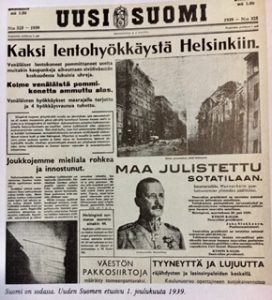
Due to their age at that time the Alestalo brothers were still not in the winter war. They only got to the front in 1941 (Kalevi) and 1942 (Erkki) at the age of 19.
At the time of the first bombings of the Winter War, Erkki was working in Hotel Karelia. During that same day he was helping couple elderly Russian ladies getting into a train which was just about to be leaving the Helsinki Railway Station. And suddenly it all started, the bombs dropped just a few hundred meters from the railway station and it was all chaotic. Erkki saw this all with his own eyes (you can see the scenes via the attached video above).
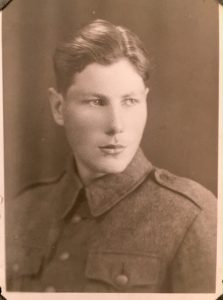
Erkki’s military service began on 18 February 1942. His warfare started from Joensuu and in a village called Lehmo, where Captain Aarne Juutilainen (who served earlier in the French Foreign Legion in Morocco) nickname called “the Moroccan horror” during his winter war. Most of time Erkki served as counter-espionage chauffeur. Mostly he was driving Ford , but sometimes also a Russian truck Molo, for example, in a retreat.
Most commonly Erkki had counter-espionage officers or even higher officers in his car. Being the only soldier among all those officers was not always all that easy, as the officers were used to give orders to their subordinates e.g. heating of the sauna, the scavenging of games, and pretty much all sorts of things you may think of. However Erkki was told that he should keep in mind it was his only job to act as a driver.
At the beginning there was little bit of problems and struggle between Erkki and a number of officers. Erkki however told that he would not do anything other than carrying a car. One of the officers was so annoyed that soon Erkki had to be questioned by even higher level officer. The case was found to be as Erkki had said, but the defeated and annoyed officer still managed to put Erkki in a cage because of what the officer labelled as “nonmilitary behavior”. After serving a few days that penalty Erkki finally got some peace to concentrate on his job and taking care of drivers duties only. At the same time he got the supremely unsubstantiated reputation that ran with him all through the end of war.
Because Erkki served in counter-espionage corps there were no files of him in Finland. All the documents were transferred to Sweden just before the war ended. The operation was called Stella Polaris. That was the reason why it was so extremely difficult for Erkki to get the veteran´s ID. No earlier than year 1992 the military headquarters finally were able to find the needed information and Erkki then got his ID – imagine that, it took very long to get this sorted.
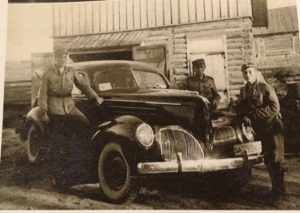
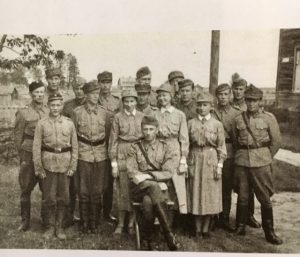
Erkki received an 11-day holiday every other month. Common soldier (like his brother Kalevi) received similarly long stay only once every six months. Erkki got one such holiday at some point of time in year 1943 and he used to tell this story how he traveled from the Äänislinna (Petroskoi) to Helsinki by train. On the way he met a fellow called Niilo Massi with whom they immediately got along really well. And it sure was very much needed to have someone to talk with as suddenly the locomotive of the train went off the rails and the journey was stopped. It took more than a day to get it back on track again.
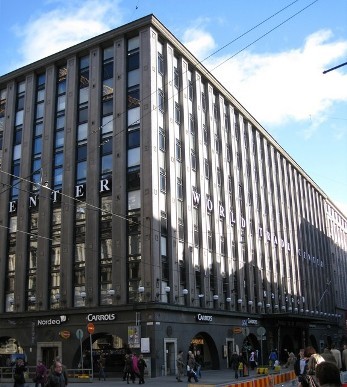
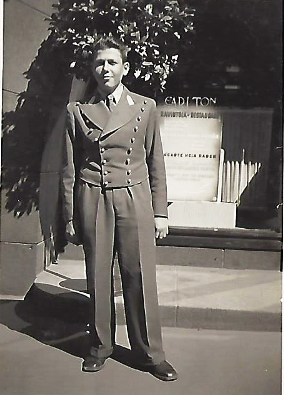
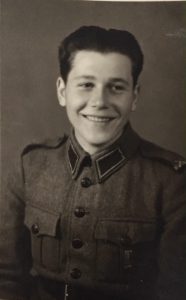
Kalevi sr:s military passport:
Division : Jv.kk 18, swore military oath 26.10.1941
Kalevi Edvard Alestalo, entered in permanent service 27.9.1941
length 168 cm, weight 62 kg,
Quality of service : armed 22 months as a rifleman.
NCO 17.10.41-6.12.41
Special education : rifleman
Military rank: Soldier
Transfers : 28.9.41 Jv.K.K21, 14.1.42 Department 1400, 21.1.42. 2./JR 4
Partcipation in battles : East Karelia Suurlahti 21.1.-15.3.42. Downstream of Syväri-river , Kuuttilahti 15.5.42 – 10.6.42. Shemenski 19.5. – 17.6.44. Nurmoila 26.6.44, Rutajärvi 27.6.44, Nisojoki 27.28.6.44.Pannila 30.6.44 Koivuselkä 3.7.44. Sääksjärvi 5.7.44. Varpajärvi 9.7.44. Kaukjärvi 23.7.- 19.9.44.
Repatriated : 18.11.1944 in Puruvesi
Army equipments released 29.11.1944
Kalev’s non-comissioned officer school was therefore left out while the front line needed fresh men.
Kalevi´s regiment: 8.D JR4, Battles in Eastern Karelia, in USSR, January 1942.
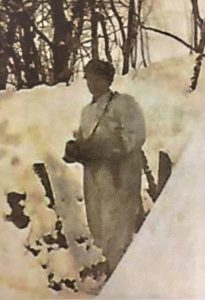
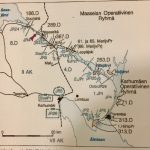

After the peace came and the brothers returned home to Tammisalo it turned out that Eetu had sold all the brothers’ civilian clothes. So they had some time to settle for the clothes that had been left behind at the end of the war.
After the war, Erkki and Kalevi got work from family Viljanen on Fennada’s film on the street of Pikku-Robertinkatu. Viljanen had his own cinemas and actually he also funded a few films. At the end of the 1940s, Kalevi worked as a usher in Gloria´s Cinema theather. At the time, Kalevi Jr. saw his first cinema with his mother. Walt Disney’s cartoons were followed closely in their own private cinema box.
After the war, Kalevi worked for the Helsinki Police department for a couple of years (as a normal police), which after he worked in various sales positions in Finnish and foreign companies in Finland. Also a couple of years in his own enterprise at the turn of the 1960s.
In Europe, after the war, there were only three capitals involved in the war, which were not occupied. These three capitals were London, Moscow and Helsinki!

In 1945, Hotel Wien (now Hotel Marski) was seeking a caretaker. The queue of 400 applicants went up to Lönnrotinkatu. Erkki succeeded to get to an interview where they asked all kinds of questions and perhaps surprisingly interested of knowing about how each candidate is using alcohol. Among the applicants were many former caretakers, but the interviewers seemed to think they had too much tendency for alcohol beverages.
When they asked this question to Erkki he replied that he doesnt spit in the glass, but indeed keeps it in reasonable amounts. So it turned out that from the huge amount of applicants it was finally Erkki who got the job. Surely his personality, language skills and prior experience from hotel Karelia played a big part too.
The new duty then required uniform. Erkki then quickly turned towards Viljanen if he could find one from one of his movie theaters. Unfortunately none was available, but instead Viljanen had a piece of fabric from which Erkki was able to use for a uniform if he just finds a tailor. The uniform was then made by an American tailor in the same house as Hotel Kämp. It turned out so good that even the leaders of Hotel Wien were pretty much dropping their eyes after they saw Erkki’s new gorgeous and stylish outfit.
In Erkki’s view the Hotel Wien was amazing place to work. They saw a lot of different people, the food was on the house and also they were able to earn a great deal at the door services.
All kinds of customers went to Hotel Wien. One of them happened to be the then a minister´s son. We are now talking about time back in December 1945. Once in the downstairs bar he asked Erkki to get rid of the big bills. Erkki didn’t immediately understand what it was all about, but as he wished exchanged large notes to smaller ones. It was only on the eve of the new year when the matter reappeared and it became known that the large 1,000-denominated banknotes would be cut in half and the holder would get his money back later. In addition the banks demanded a credible account of the origin of the money. The black market traders immediately suffered huge losses, which of course was the purpose of the whole operation.
After the war, people were lacking everything – not least good clothing. However, Erkki was able to renew his clothing fairly quickly. First from Tampere Footwear they found really nice leather shoes originally intended for Kalevi who also had the necessary shoe card or license. But Kalevi found the fine Swedish shoes were too tight for him, but for Erkki they were as if they were made for him. It was then decided that Erkki would use the license and get the shoes. Kalevi’s shoes would be taken care later.
Erkki also found a good coat in Iso-Roobertinkatu from a Jewish merchant. The coat was in the window and Erkki went in and asked if it was for sale. The seller went to the backroom to ask if the jacket was available (some Lindström had odered it originallly). The answer came quickly and it Erkki was told that they could actually sell it. The jacket came off with whopping price of 16 000 FIM and any rationing cards were not asked this time (the usual monthly salary at that time was FIM 3000, so this nice little shopping could have meant nearly half a year’s salary of any average worker at the time).
The same coat shop was then used a multiple of times. For example Kalevi was to be married in autumn 1946 and a decent overcoat was needed. Kalevi went with Erkki to the same Jewish shop and the purchase was again successful. It surely did not hurt the process as Kalevi happened to be in a police uniform (as he worked as a police man during that time). Friend Eero Tuomola also received a coat with the help of Erkki in the same way. Surely Erkki was a popular customer for the shop at that time!
Gradually Erkki began to explore the possibilities to go to the sea. For this purpose he had already started the English studies (correspondence courses, etc.) as well as a cooking school during the war. It was difficult to get on board if you had no previous experience, but each boat needed one or more chefs. This turned out to be a viable strategy.
He often visited the port of Kotka watching the situation. Once someone had asked Erkki to pick up a bolt from the ship. Erkki looked at the fact that the customs officers were not visible and raised the bolt on his shoulder. Despite being careful suddenly a customs officer appeared on the dock. Erkki swiftly walked by the man without stopping. Still the customs officer was yelling towards Erkki and wanted to know what the hell was there on his shoulder. Then quickly Erkki remembered the name of a tailor called Leo Pylkkö in Kotka. He had seen the name in of the windows he had walked by and shouted out that he was taking the fabric to Leo Pylkkö. The customs officer with anguished voice replied: “Yes, I will ask Leo for sure.” With a quick, smart and wit reaction Erkki was able to unlock the situation and through these experiences gradually developed a model of working things out – something he discovered very valuable later in the international scenes as well.
Together with Mikko Marto from Kotka, Erkki tried to find a ship and get onboard. Mikko had been Kalevi’s best mate from the front line during the war.
In June 1947, the ship was finally found and moved from Kotka to Jätkäsaari, Helsinki, where it stayed for five days. After that 30 June 1947 the ship went on to Antwerp, then to Lisbon and further to Durban and Sydney. At the beginning of December, they came back to North, Oslo. From there the two mates moved to Stockholm. The Stockholm immigration authorities threatened to drive them out of the country, because they did not have a residence permit. However by huge coincidence a Jewish influential man helped them to get temporary residence permits. Soon enough Erkki was already spitting the fish in the Grand Hotel’s kitchen.
Erkki had calculated that around the Christmas and New Year’s time he might be able get another ship, because that’s usually the time when the locals are going to spend their Christmas holiday and time with family. And eventually it also happened just like that. On the very last day of 1947 Erkki got a ship that headed to West India. At this point Erkki´s and Mikko’s paths parted, but as we now know Erkki’s adventures were only just about to begin.
